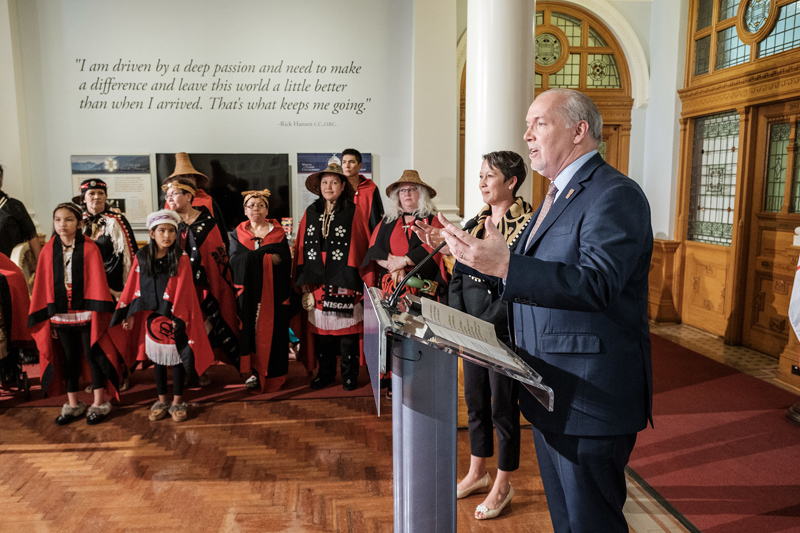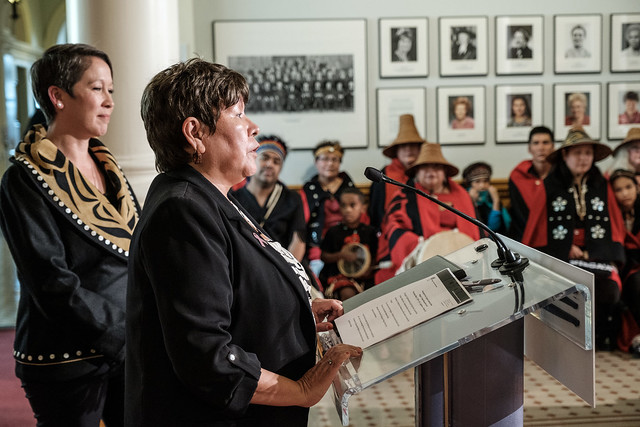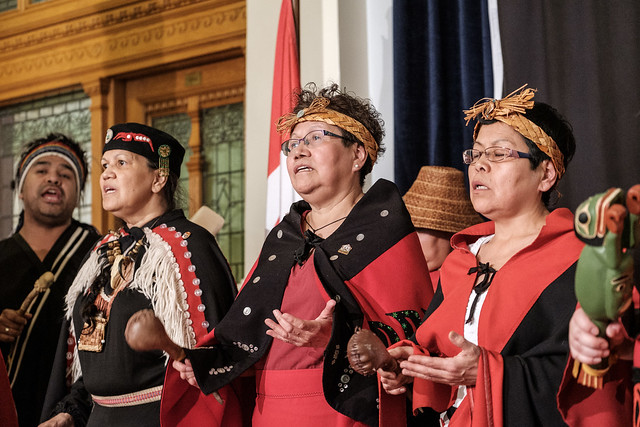After nearly 25 years of negotiations, the Nisga'a initiated a historic treaty with the provincial and federal governments. This was the first agreement of its kind made in B.C. since Treaty 8 was signed in 1899 between the federal government and the First Nations of the Lesser Slave Lake area.
The agreement resolved a land claim that the Nisga'a first began pursuing in 1887. The Nisga'a Treaty allows the nation to be self-governing and grants them the right to pursue their own cultural and social priorities.
Currently, the Nisga'a Government is elected on a five year basis and shares jurisdiction with the provincial and federal governments over areas like education, health, land, natural resources, and social services. All laws that the Nisga'a Government passes operate alongside those of B.C. and Canada, and when legal overlaps or inconsistencies arise, the treaty contains methods of resolution.
The treaty came into effect on May 11, 2000, and on that date, the federal Indian Act, 1985, ceased to apply to Nisga'a people (except for the purpose of determining whether an individual is an "Indian"). The Nisga'a Final Agreement is the first treaty in British Columbia to provide constitutional certainty in respect of an Indigenous peoples' Section 35 right to self-government.
Chief Joseph Gosnell was the first First Nations Chief to use the Ceremonial Entrance of the Parliament Buildings during the signing of the Nisga'a treaty on December 2, 1998.



